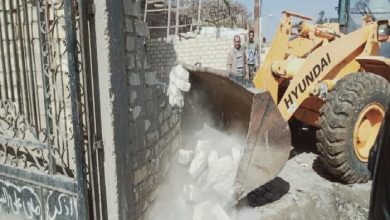How Jerusalem’s Old City turned into a ghost town before my eyes | Israel War on Gaza

Occupied East Jerusalem – Within moments of arriving at Damascus Gate, one of the main entrances into the Old City of Jerusalem, I found myself surrounded by four Israeli paramilitary officers.
“What’s in your bags?” one of the officers asked as she began unzipping and rummaging through my backpack, clearly not about to wait for my answer. Another snatched my purse to look inside it.
For once, I felt what it is like to be a Palestinian male in occupied East Jerusalem. Men – young ones in particular – are searched by Israeli officers daily, almost always arbitrarily.
“You’re not allowed to sit here,” they told me.
“I’m standing, not sitting, and I’m waiting for a friend,” I replied.
“You’re not allowed to stand here.”
It took me a moment to process what I had heard. Here I was, in a public space that has special meaning and memories for almost all Palestinians in Jerusalem, being told by Israeli officers that I wasn’t even allowed to stand there.
As a Jerusalemite myself and as a journalist who has been covering the city for the past decade, I have watched the liveliest and busiest commercial centre for Palestinians, tourists and pilgrims in Jerusalem turn into a ghost town.
From the start of Israel’s bombardment of the besieged Gaza Strip on October 7, Israeli forces have imposed a strict lockdown on the Old City, which is in the eastern, occupied side of Jerusalem. Only those with their addresses registered within the 16th-century walls are allowed to enter through what residents describe as a siege.
On February 9, however, Israeli forces had loosened the restrictions slightly, permitting a limited number of Palestinians from outside the Old City to enter for Friday prayers. It was for this reason that I was at Damascus Gate, Bab el-Amoud in Arabic, the largest and the most magnificent of the Old City’s seven open gates, used mainly by Palestinians and tourists.
Surrounding the 12-metre (40ft) walls of the gate is a large, semi-circular amphitheatre, where Palestinians have traditionally gathered to sit and sip coffee with friends and family. The gate’s architecture and location have long rendered the space a cultural and political Palestinian icon.
I looked on in shock at the scene before me: groups of officers guarding the small opening between the metal barricades – essentially checkpoints – placed at the top of the staired plaza, only enough room for one person to enter at a time.
While regular users of Damascus Gate are familiar with Israeli lockdowns and the constant heavy deployment of paramilitary forces, I had never seen it closed off in this way before.
After I was searched, I walked into the gate and stood to the side, out of the soldiers’ view. I rarely announce myself to Israeli forces as a journalist, having witnessed firsthand how many of my Palestinian colleagues in Jerusalem are assaulted and prevented from doing their jobs. I know I could easily be a target too.
Over the past decade, the Damascus Gate plaza has been transformed from a market filled with endless stalls, shoppers and families socialising on the steps to an empty, heavily militarised, tense space.
The restrictions came in stages and have taken multiple forms. For example, in 2016, the Israeli government passed the “stop-and-frisk” law, allowing Israeli soldiers to search any passer-by “regardless of behaviour, in a location that is thought to be a target for hostile destructive actions”.
This tool is heavily used against Palestinians and is a practice that human rights groups have long denounced as “open racism” and racial profiling. Young Palestinian men can be seen on a near-daily basis being searched in humiliating and provocative ways and very often assaulted.
The features of Damascus Gate have themselves changed over the past few years. Israeli authorities have built three large, permanent military cabins, or watchtowers, where young men are taken and beaten away from the public’s eyes. I have witnessed this happening on many occasions.
Sara Abu Dayyeh*, a young Jerusalemite who did not wish to be named for fear of reprisals, told me: “The Old City has been changed radically.”
“It’s completely empty. It’s so painful to see,” she said, standing outside the checkpoint at Damascus Gate.
“We have always been accustomed to walking through Damascus Gate and praying at Al-Aqsa Mosque in the Old City. Now this is completely forbidden,” Abu Dayyeh continued. “You’re not even allowed to enter the Old City to use the bathroom!”
The Old City once featured a seemingly constant stream of pilgrims and Palestinians crowding its narrow cobblestone streets, coming to visit and pray at some of the holiest sites in the world for Islam, Christianity and Judaism.
But today, the Old City is nearly empty.
“The Old City is everything to us. Jerusalem is our hearts. This is known among all Palestinians. It is not something we can quantify with words or actions even,” Abu Dayyeh said.
Many shop owners and residents have told me they fear Israeli restrictions will continue and increase as the Muslim holy month of Ramadan, which begins in March, approaches.
Abu Dayyeh has another concern.
“My only fear is that during Ramadan, the young men will not show up for Jerusalem and Al-Aqsa, especially Muslim men,” she said.
“In this place, where the occupation is trying to impose its control, we as Palestinians have to enforce our presence.
“We are not telling people to come and fight the soldiers. We are just pointing out that as long as you are in this spot on Earth, you are required to come and just be present here.”
*Name has been changed to protect anonymity.



